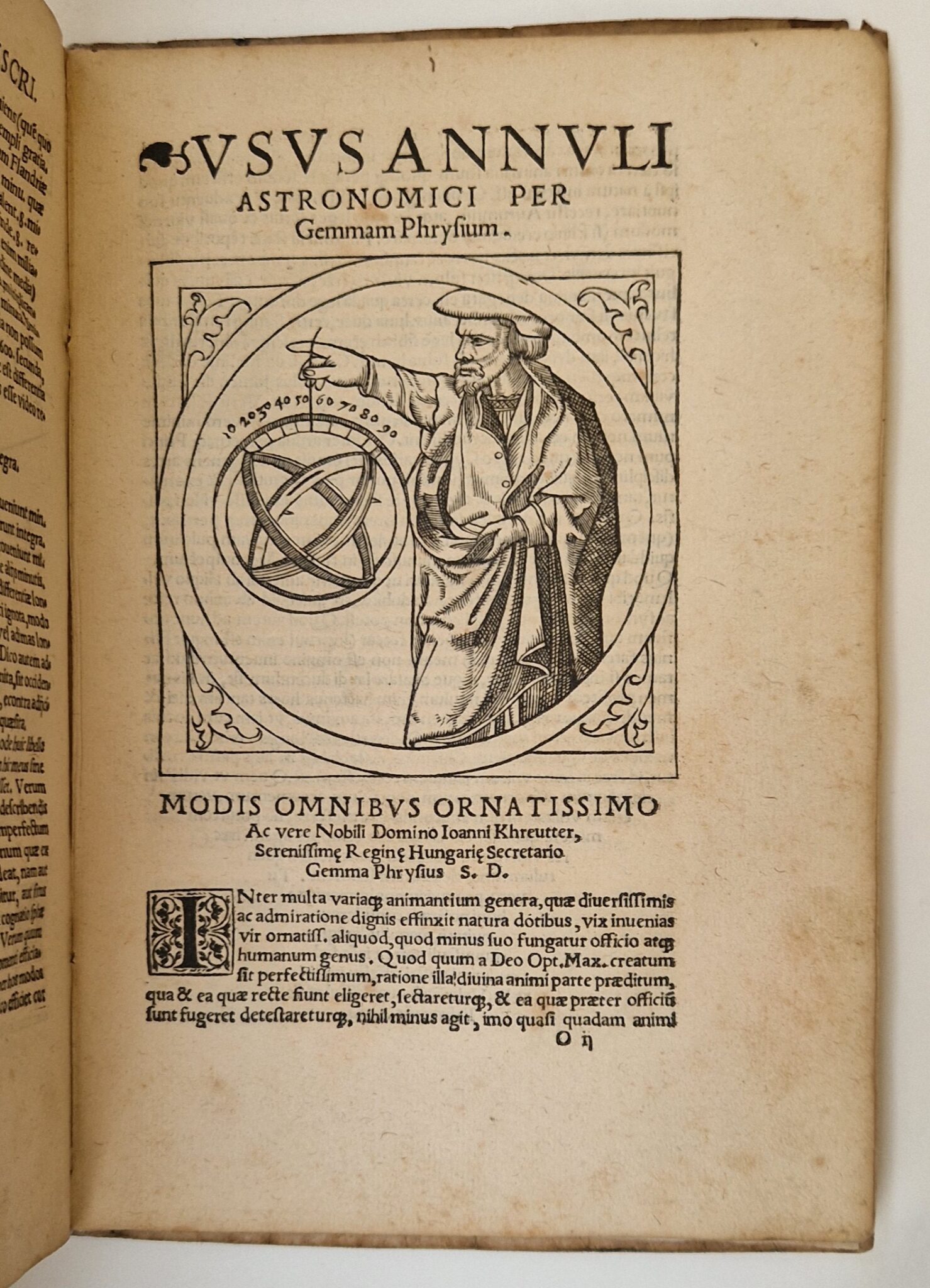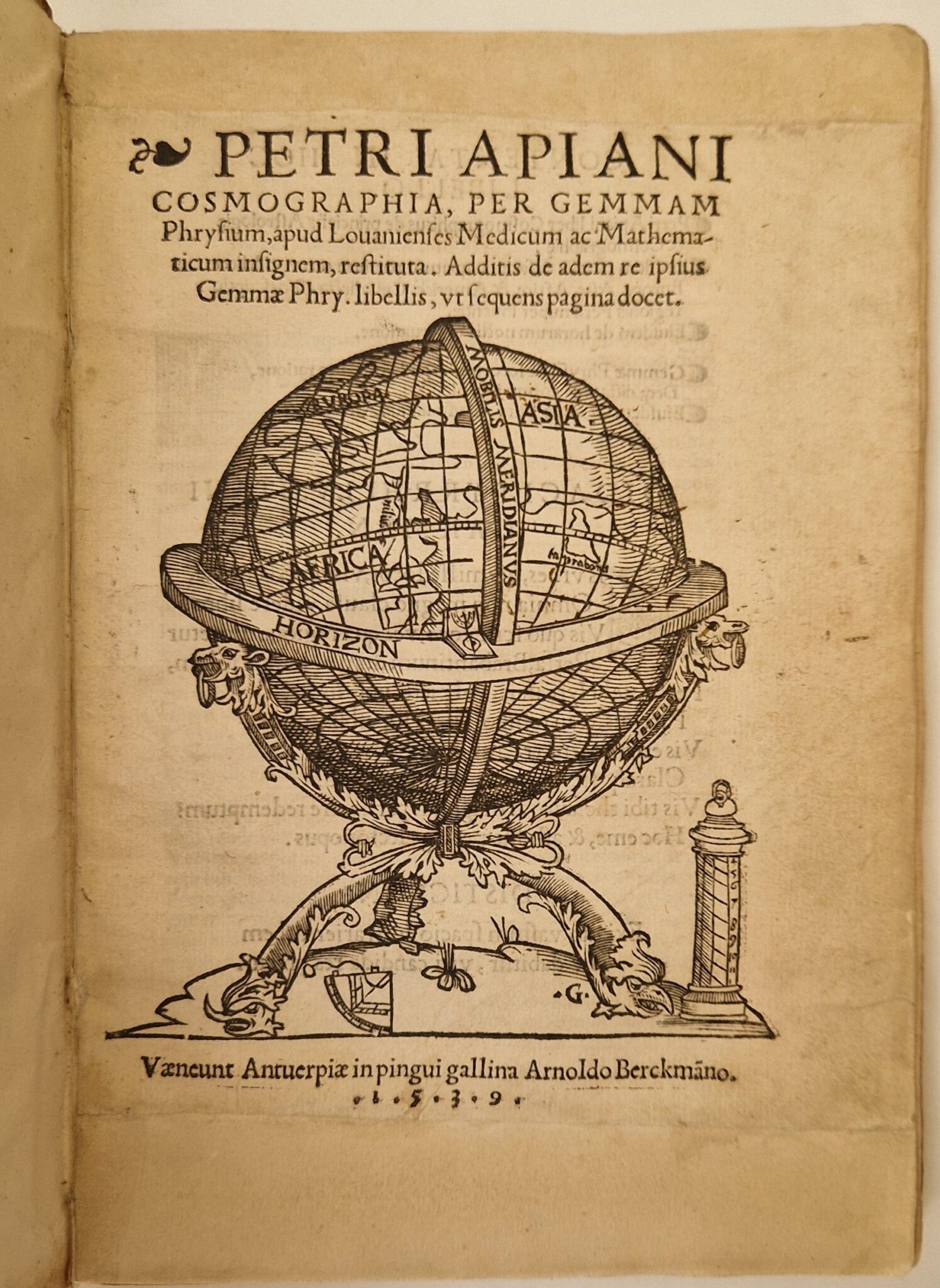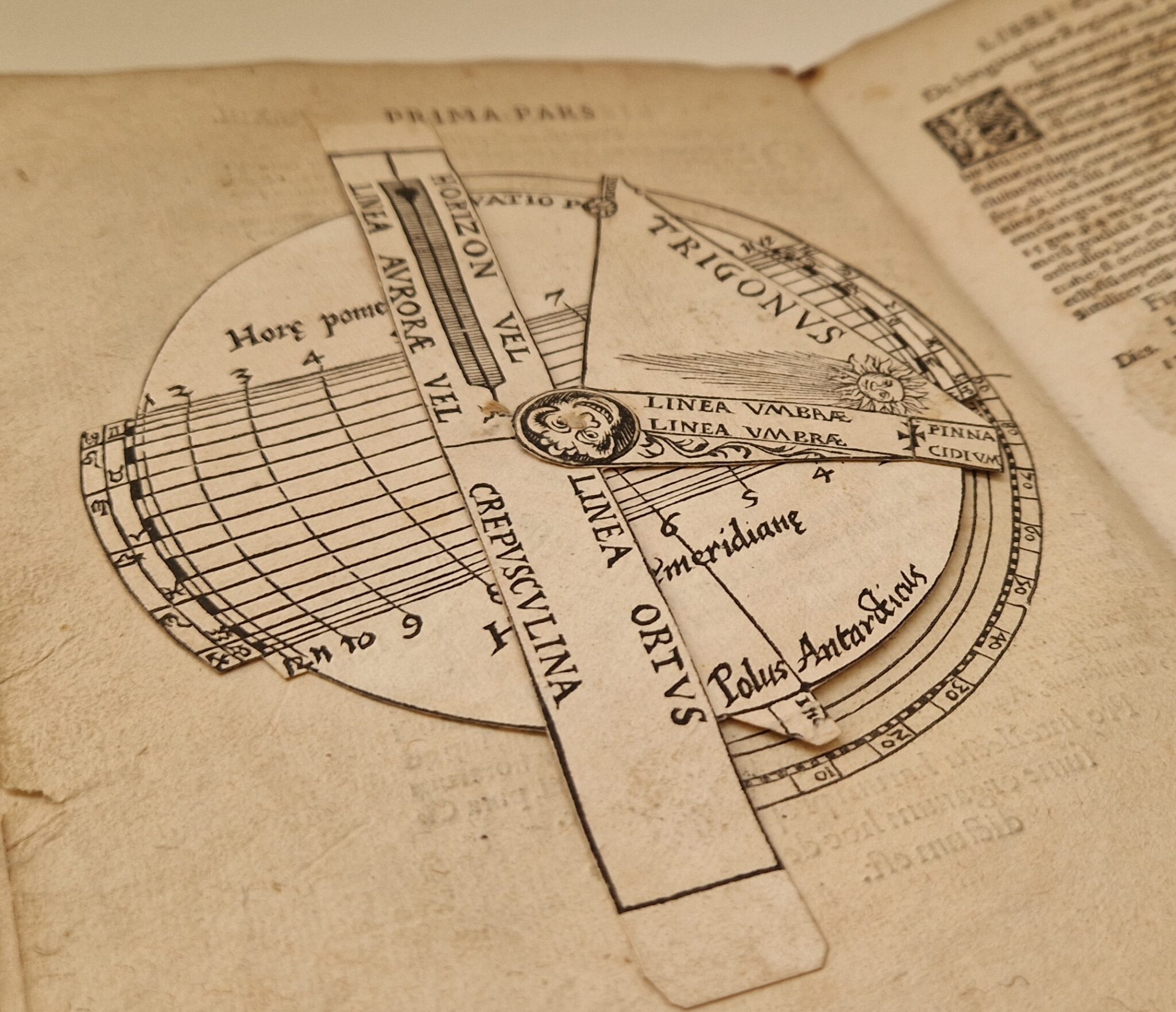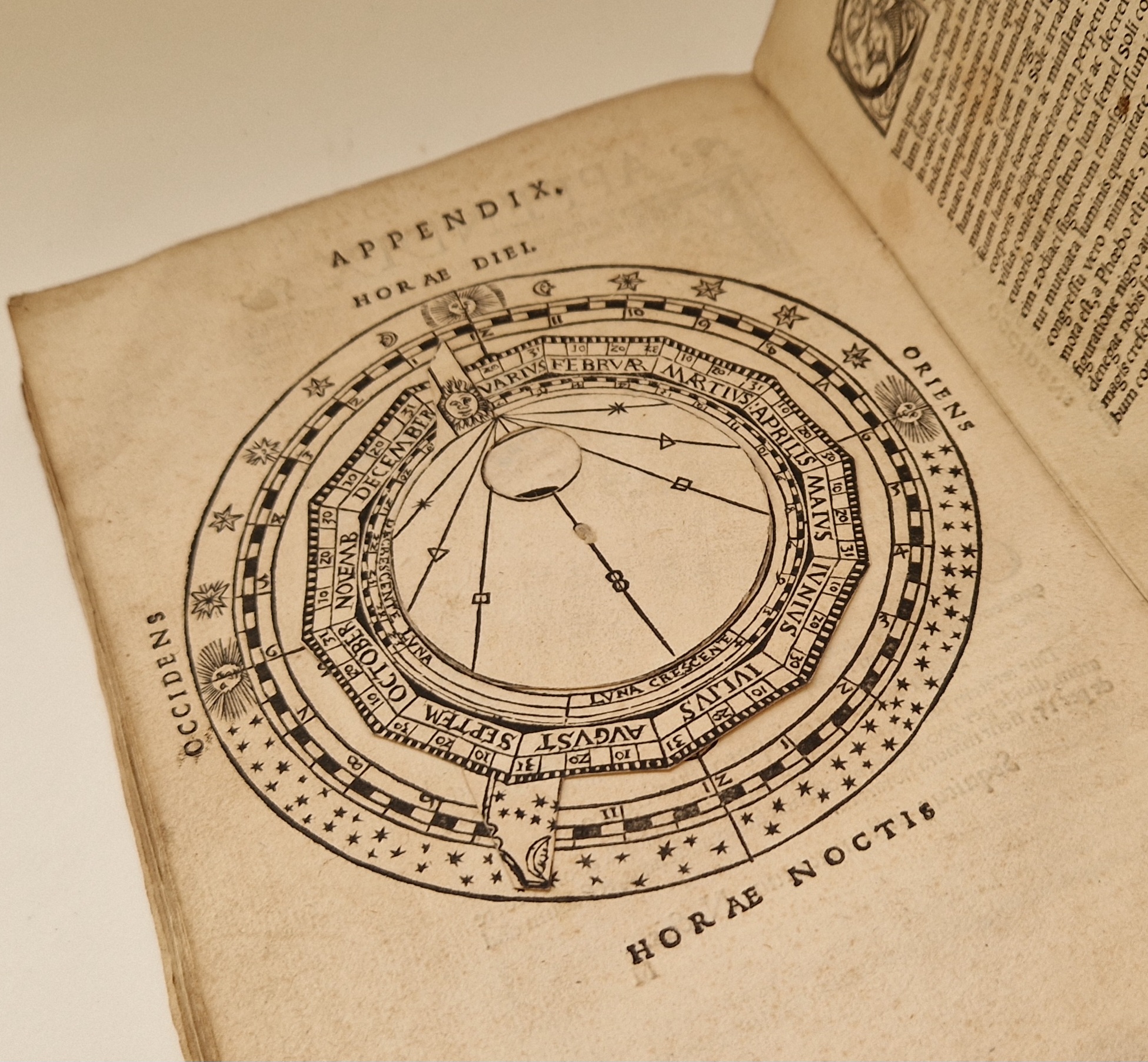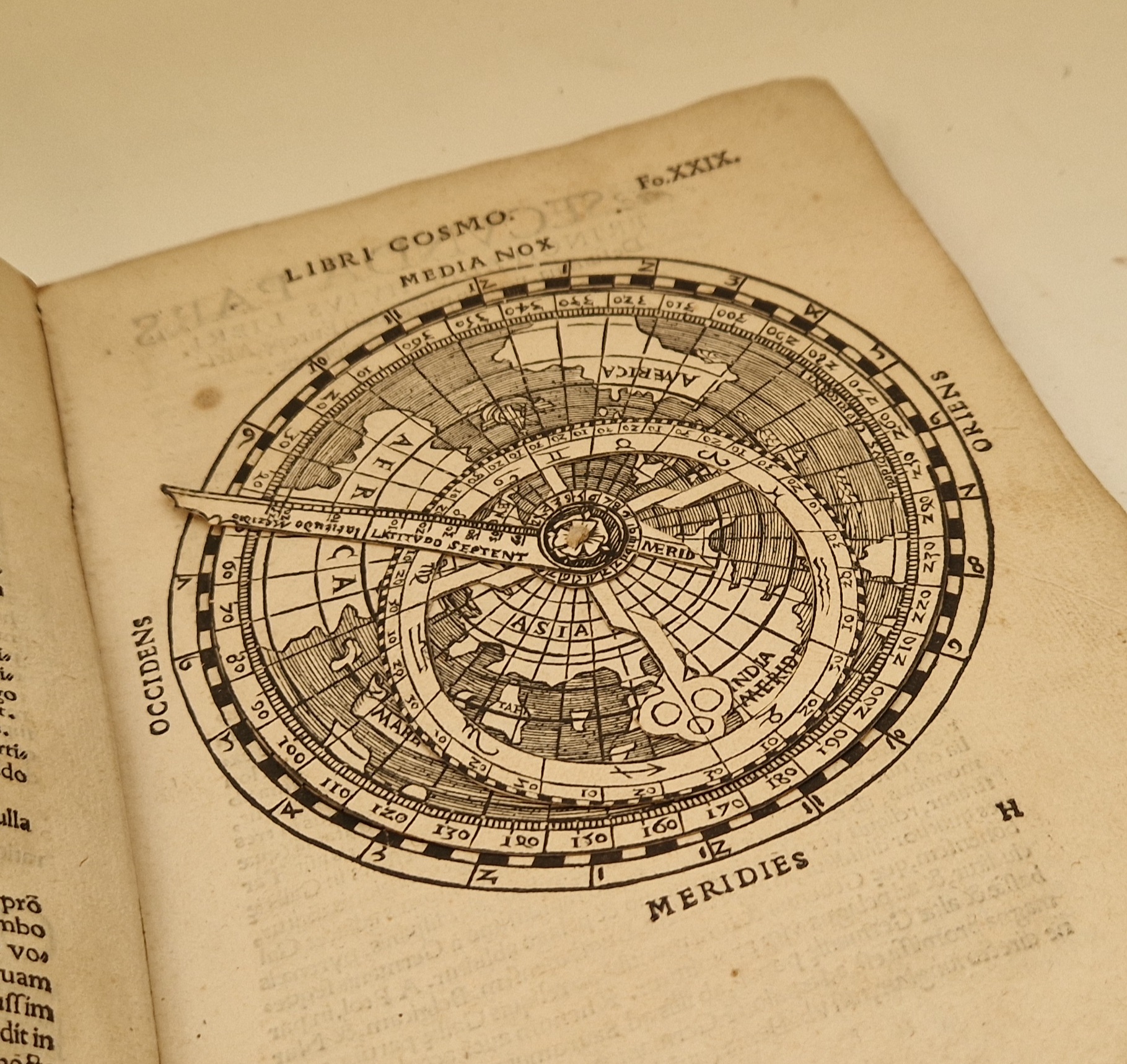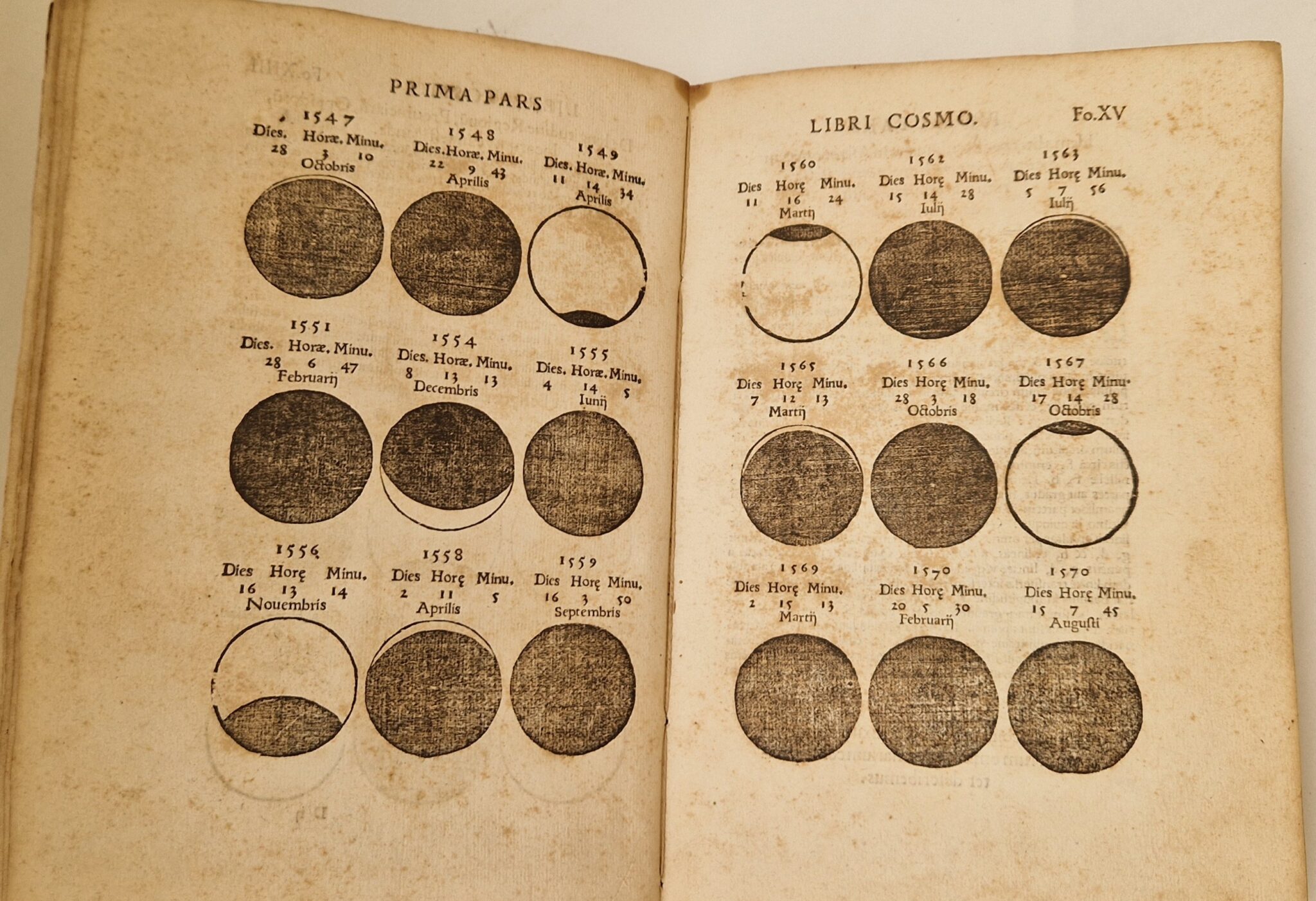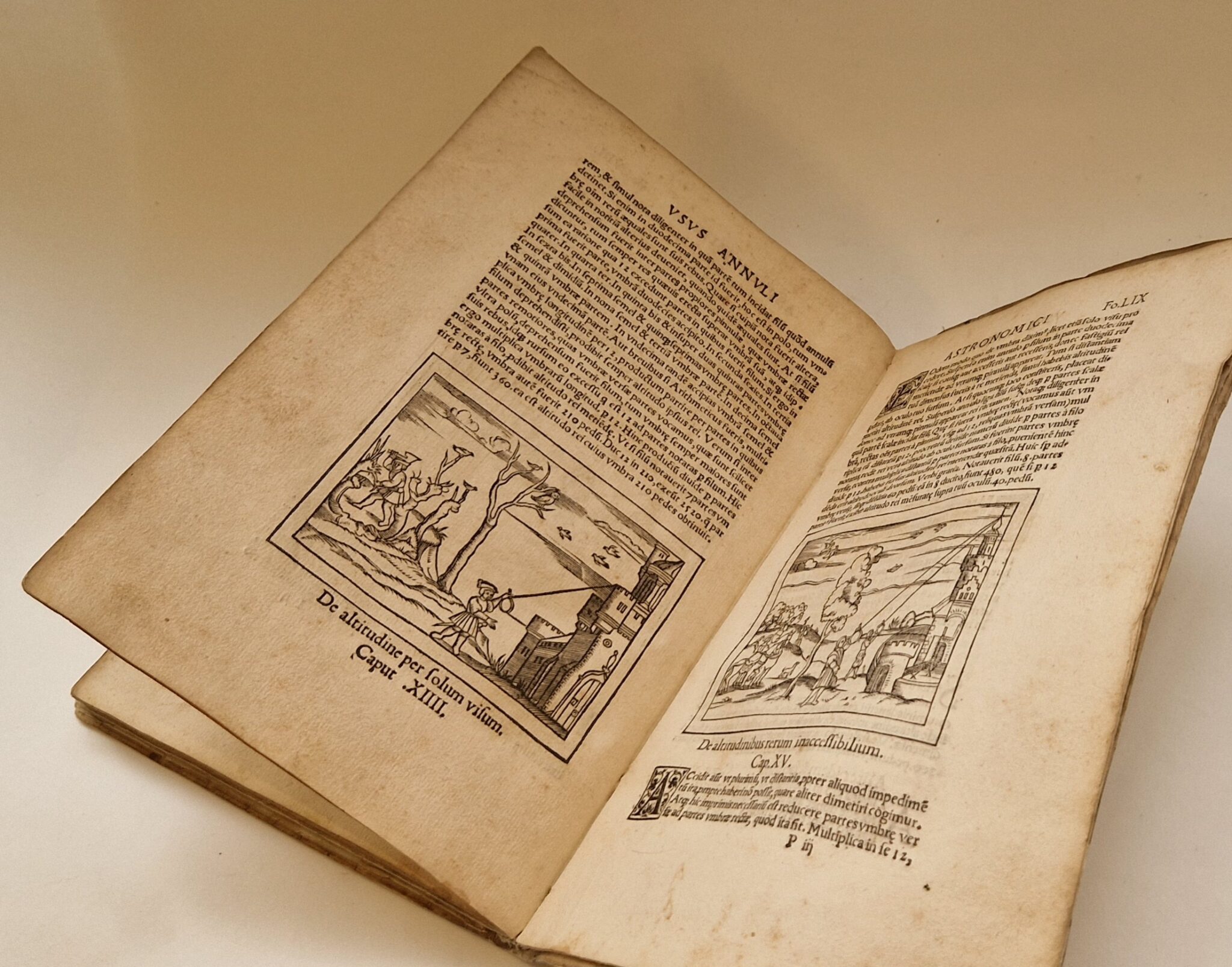Description
APIAN (Peter Bennewitz, dit), Petri Apiani Cosmographia, per Gemmam Phrysium, apud Louanienses medicum ac mathematicum insignem restituta…, Anvers, Arnold Birckmann, 1539.
Small 4to of LXI, (1) leaves ; ontemporary vellum (endpapers renewed, copy restored to its original binding? Top and bottom margins of the title page and bottom margin of the last leaf restored, without affecting the text, ff. IV and LVII remargined; scattered foxing on a few leaves).
The invention of the astronomical ring by Gemma Frisius – First edition, accessible.
Early edition of the Apian Cosmography with corrections and additions by Gemma Frisius whose Usus annuli astronomici appears for the first time in an Apian edition.
Apian’s Cosmography first appeared in 1524. In 1529, Gemma Frisius published a corrected and annotated edition. The present Antwerp edition, 1539, contains Gemma Frisius’s “Libellus de locorum describendorum ratione,” originally printed in the 1533 edition, in which he was the first to state the principle of triangulation in surveying. The 1539 edition is also augmented by his description of the use of the astronomical ring (“Usus annuli astronomici per Gemmam Phrysium,” ff. LIV-LX), first published separately in 1534—an extremely rare booklet, a copy of which was only discovered in 2001—a table of latitudes for numerous cities, and an index. On the various editions of Gemma Frisius, see Claude Sorgeloos, “A post-incunable rediscovered: the Usus annuli astronomici of Gemma Frisius, Louvain and Antwerp, 1534,” Quaerendo, 2001, 31(4), pp. 255-264.
“Along with Sacrobosco’s Sphere, Oronce Fine’s Sphere of the World, and Oronce Fine’s Theoretical Theory of the Heavens, […] Apian’s work, revised by Gemma Frisius, constitutes one of the foundations of cosmographic teaching in the 16th century […] It was quickly distributed in schools, particularly in Jesuit colleges. » (Jean-Marc Besse, Les grandeurs de la Terre Aspect du savoir géographique à la Renaissance, ENS Éd., 2017, p. 38.)
“Born on December 8, 1508, in the town of Dokkum (in the northern Netherlands, in Friesland, as his nickname indicates), probably orphaned in early childhood, Gemma [Regnier Gemma, known as Frisius] studied about which little is known except that, for the academic part, he completed his studies in Louvain. There, he first devoted himself to medicine, a discipline in which he obtained his doctorate and then taught throughout his life, spent in Louvain, where he was a classmate and friend of Andreas Vesalius. However, he undertook, at the same time or shortly after, studies in mathematics, showing in particular a certain taste for astronomy (for example, he was informed early on of the work of Copernicus and is said to have taken a stand, at least in private, for heliocentrism; there was even talk of a meeting between the two men, which never took place). And since Louvain was also an important center for cosmographic studies, it was ultimately in this field that Gemma first became famous: his first work thus consisted, in 1529, in the publication of a revised and expanded edition of the Cosmography of Pierre Apian. (Violaine Giacomotto-Charra, “The translator at work: the De principiis of Gemma Frisius and its translation by Claude de Boissière”, Traduire la science, Maison des Sciences de l’Homme d’Aquitaine, 2008.)
A very complete copy of the five figures with movable elements and the two cut-out figures, all original. The five figures with movable elements are the “latitude, pole, horizon” volvella (f. 10th v°), the “universal flat sphere” volvella (f. 13th v°), the “mirror of the world” volvella (f. 29th r°), the “night dial” volvella (f. 45th v°), and the calendar dial with movable thread (f. 11th v°). The two cut-out figures affixed to the lower margin of f. 47th represent the hour wheel and its alidade, which complete the “night dial” (for a detailed explanation of the volvellas in the work and their use, see Véronique Hauguel, Cosmographie de Pierre Apian).
The Cosmographie d’Apien is one of the first printed books with multiple volvellas in the fields of astronomy and geography. These volvelles allow you to simply solve, by manipulating and reading graduations, mathematical problems on finding the time using the Sun, the Moon or the stars, the calendar, on location on Earth, etc., without having to obtain scientific instruments.
Ask the Dealer
Dealer information
 Le Zograscope
Le Zograscope
Established by Alexandre Piffault in 2014 and based in Paris at 5 rue de Condé, 75006, very close to Odéon, Le Zograscope specializes in antique and rare books in Science, Medicine and Technology, and rare antique instruments in the same fields. We have especially a strong interest in early and continental microscopy, early and special mathematical/drawing instruments, medical and surgical instrument, and rare technology.
Personnal website : https://www.lezograscope.com/



